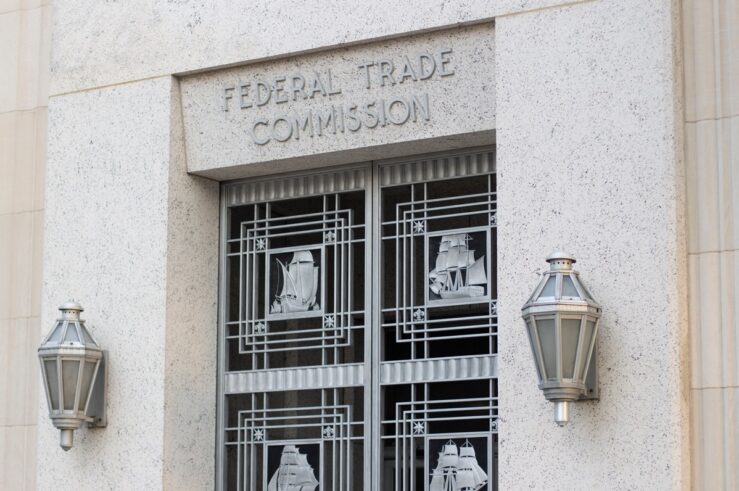Today, in Kimble v. Marvel Entertainment, a case involving the technology underlying the Spider-Man Web-Blaster, the Supreme Court invoked stare decisis to uphold an old precedent based on bad economics. In so doing, the Court spun a tangled web of formalism that trapped economic common sense within it, forgetting that, as Spider-Man was warned in 1962, “with great power there must also come – great responsibility.”
In 1990, Stephen Kimble obtained a patent on a toy that allows children (and young-at-heart adults) to role-play as “a spider person” by shooting webs—really, pressurized foam string—“from the palm of [the] hand.” Marvel Entertainment made and sold a “Web-Blaster” toy based on Kimble’s invention, without remunerating him. Kimble sued Marvel for patent infringement in 1997, and the parties settled, with Marvel agreeing to buy Kimble’s patent for a lump sum (roughly a half-million dollars) plus a 3% royalty on future sales, with no end date set for the payment of royalties.
Marvel subsequently sought a declaratory judgment in federal district court confirming that it could stop paying Kimble royalties after the patent’s expiration date. The district court granted relief, the Ninth Circuit Court of Appeals affirmed, and the Supreme Court affirmed the Ninth Circuit. In an opinion by Justice Kagan, joined by Justices Scalia, Kennedy, Ginsburg, Breyer, and Sotomayor, the Court held that a patentee cannot continue to receive royalties for sales made after his patent expires. Invoking stare decisis, the Court reaffirmed Brulotte v. Thys (1964), which held that a patent licensing agreement that provided for the payment of royalties accruing after the patent’s expiration was illegal per se, because it extended the patent monopoly beyond its statutory time period. The Kimble Court stressed that stare decisis is “the preferred course,” and noted that though the Brulotte rule may prevent some parties from entering into deals they desire, parties can often find ways to achieve similar outcomes.
Justice Alito, joined by Chief Justice Roberts and Justice Thomas, dissented, arguing that Brulotte is a “baseless and damaging precedent” that interferes with the ability of parties to negotiate licensing agreements that reflect the true value of a patent. More specifically:
“There are . . . good reasons why parties sometimes prefer post-expiration royalties over upfront fees, and why such arrangements have pro-competitive effects. Patent holders and licensees are often unsure whether a patented idea will yield significant economic value, and it often takes years to monetize an innovation. In those circumstances, deferred royalty agreements are economically efficient. They encourage innovators, like universities, hospitals, and other institutions, to invest in research that might not yield marketable products until decades down the line. . . . And they allow producers to hedge their bets and develop more products by spreading licensing fees over longer periods. . . . By prohibiting these arrangements, Brulotte erects an obstacle to efficient patent use. In patent law and other areas, we have abandoned per se rules with similarly disruptive effects. . . . [T]he need to avoid Brulotte is an economic inefficiency in itself. . . . And the suggested alternatives do not provide the same benefits as post-expiration royalty agreements. . . . The sort of agreements that Brulotte prohibits would allow licensees to spread their costs, while also allowing patent holders to capitalize on slow-developing inventions.”
Furthermore, the Supreme Court was willing to overturn a nearly century-old antitrust precedent that absolutely barred resale price maintenance in the Leegin case, despite the fact that the precedent was extremely well know (much better known than the Brulotte rule) and had prompted a vast array of contractual workarounds. Given the seemingly greater weight of the Leegin precedent, why was stare decisis set aside in Leegin, but not in Kimble? The Kimble majority’s argument that stare decisis should weigh more heavily in patent than in antitrust because, unlike the antitrust laws, “the patent laws do not turn over exceptional law-shaping authority to the courts”, is unconvincing. As the dissent explains:
“[T]his distinction is unwarranted. We have been more willing to reexamine antitrust precedents because they have attributes of common-law decisions. I see no reason why the same approach should not apply where the precedent at issue, while purporting to apply a statute, is actually based on policy concerns. Indeed, we should be even more willing to reconsider such a precedent because the role implicitly assigned to the federal courts under the Sherman [Antitrust] Act has no parallel in Patent Act cases.”
Stare decisis undoubtedly promotes predictability and the rule of law and, relatedly, institutional stability and efficiency – considerations that go to the costs of administering the legal system and of formulating private conduct in light of prior judicial precedents. The cost-based efficiency considerations underlying applying stare decisis to any particular rule, must, however, be weighed against the net economic benefits associated with abandonment of that rule. The dissent in Kimble did this, but the majority opinion regrettably did not.
In sum, let us hope that in the future the Court keeps in mind its prior advice, cited in Justice Alito’s dissent, that “stare decisis is not an ‘inexorable command’,” and that “[r]evisiting precedent is particularly appropriate where . . . a departure would not upset expectations, the precedent consists of a judge-made rule . . . , and experience has pointed up the precedent’s shortcomings.”




